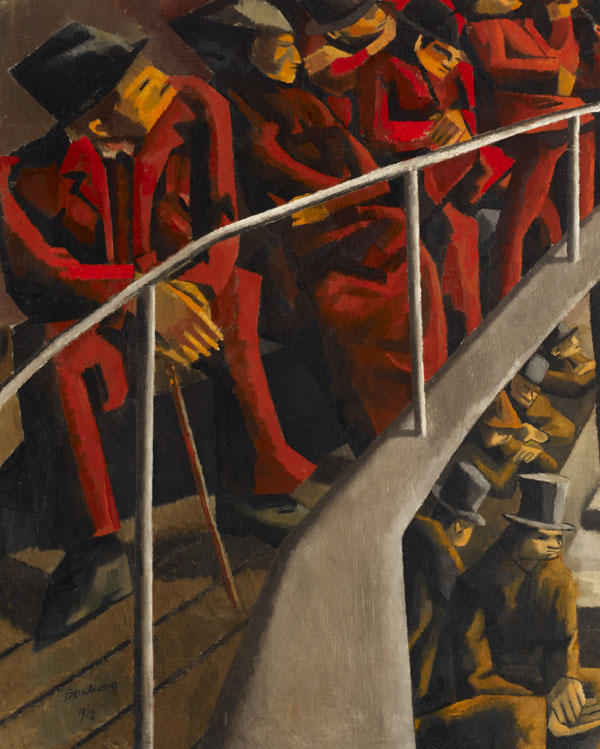 David Bomberg’s Ghetto Theatre (1920, © Ben Uri Collection) is one of the stand-out pictures in the Out of Chaos exhibition, which opens at the Laing Art Gallery on October 15th. The exhibition, which ranges over more than 100 years of art, has a strong showing by Bomberg and the Whitechapel Boys, including painters Mark Gertler, Jacob Kramer, Bernard Meninsky, Isaac Rosenberg and Clare Winsten, as well as sculptor Jacob Epstein. Never formally a group, these artists were linked together by artistic vision, friendship, and a shared sense of identity generated by their Jewish migrant backgrounds. Their work contributed a great deal to the development of modernist art in Britain in the early 20th century.
David Bomberg’s Ghetto Theatre (1920, © Ben Uri Collection) is one of the stand-out pictures in the Out of Chaos exhibition, which opens at the Laing Art Gallery on October 15th. The exhibition, which ranges over more than 100 years of art, has a strong showing by Bomberg and the Whitechapel Boys, including painters Mark Gertler, Jacob Kramer, Bernard Meninsky, Isaac Rosenberg and Clare Winsten, as well as sculptor Jacob Epstein. Never formally a group, these artists were linked together by artistic vision, friendship, and a shared sense of identity generated by their Jewish migrant backgrounds. Their work contributed a great deal to the development of modernist art in Britain in the early 20th century.
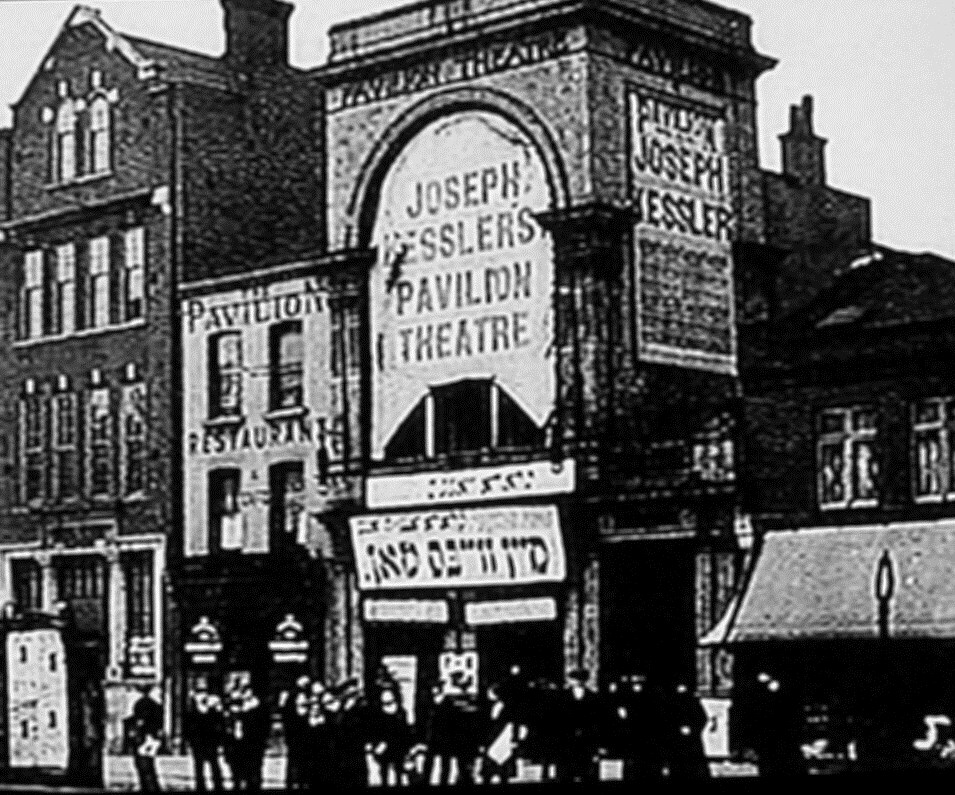 Bomberg would have attended performances at the theatre in Whitechapel, in the East End of London. Although its formal name was the Pavilion Theatre (photos of the theatre can be seen here and here), its local audience referred to it as the Ghetto Theatre (ghetto just meaning Jewish area, without any sinister overtones). The Yiddish performances at the theatre played an important part in the cultural life of the community. By choosing the title he did, Bomberg was making it clear that he was portraying an aspect of contemporary Jewish life.
Bomberg would have attended performances at the theatre in Whitechapel, in the East End of London. Although its formal name was the Pavilion Theatre (photos of the theatre can be seen here and here), its local audience referred to it as the Ghetto Theatre (ghetto just meaning Jewish area, without any sinister overtones). The Yiddish performances at the theatre played an important part in the cultural life of the community. By choosing the title he did, Bomberg was making it clear that he was portraying an aspect of contemporary Jewish life.
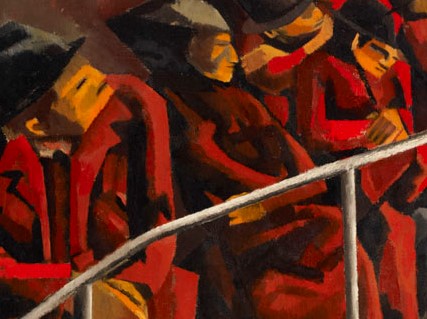 Desperately poor for much of his life, Bomberg would have sat in the cheap upper seats at the theatre, and he’s painted the audience there in vibrant reds. Their mask-like faces carry overtones of Cubist pictures such as Picasso’s Les Demoiselles d’Avignon. In contrast to the balcony figures, Bomberg used drab browns and greys for the top-hatted audience in the stalls – possibly reflecting his disappointment with the well-off people who consistently failed to buy his pictures. The red/grey colour division is the main way Bomberg has indicated space in his picture. Instead of concentrating on describing progression back into the composition, he’s arranged the balcony edge to project aggressively towards the viewer. Bomberg’s rough handling of the paint also adds to the forcefulness of the painting style.
Desperately poor for much of his life, Bomberg would have sat in the cheap upper seats at the theatre, and he’s painted the audience there in vibrant reds. Their mask-like faces carry overtones of Cubist pictures such as Picasso’s Les Demoiselles d’Avignon. In contrast to the balcony figures, Bomberg used drab browns and greys for the top-hatted audience in the stalls – possibly reflecting his disappointment with the well-off people who consistently failed to buy his pictures. The red/grey colour division is the main way Bomberg has indicated space in his picture. Instead of concentrating on describing progression back into the composition, he’s arranged the balcony edge to project aggressively towards the viewer. Bomberg’s rough handling of the paint also adds to the forcefulness of the painting style.
In Ghetto Theatre, Bomberg kicked aside the traditional rules on how to paint a good picture. His confrontational approach to the art world extended back to 1913, when he was expelled from the Slade School of Art in London for his insistence on following ‘the Picasso madness’, as it was described in the British press. That year, Bomberg produced his large and elaborate drawing Racehorses (1913, Ben Uri Collection © The artist’s family), also on show in the Out of Chaos exhibition.
In Bomberg’s Racehorses, the robot-like horses and their multiple stick legs – intended to represent movement – are indebted to the energetic and aggressive art style of Futurism, itself derived from Cubism. The style of Racehorses was so new, so incomprehensible to many that Whitechapel writer John Rodker had to warn his readers that it was ‘not intended to be comic’. Rodker explained that the picture showed racehorses, with jockeys, trotting around a paddock before the race. The small blocky figures at the front of the picture are spectators (on the left) and a couple of bookies (on the right). At the top, Bomberg has shown horses racing by on the other side of the rails, their forms reduced to slanting rod-like shapes. Bomberg had been introduced to Cubist art by the Post-Impressionist exhibition of 1910–11 in London organised by Roger Fry. His appreciation of Cubism was enhanced by his visit to Paris in 1913, when he met Picasso.
 The following year, in 1914, Bomberg and Jacob Epstein created a showcase for themselves and fellow members of the Whitechapel Boys by selecting a ‘Jewish Section’ of European and British art for the Whitechapel Art Gallery’s major exhibition Twentieth Century Art: A Review of Modern Movements. Bomberg’s Racehorses was one of the exhibits. (The photo shows Whitechapel Art Gallery, with the next-door library where the artists and writers associated with the Whitechapel Boys would sometimes meet.)
The following year, in 1914, Bomberg and Jacob Epstein created a showcase for themselves and fellow members of the Whitechapel Boys by selecting a ‘Jewish Section’ of European and British art for the Whitechapel Art Gallery’s major exhibition Twentieth Century Art: A Review of Modern Movements. Bomberg’s Racehorses was one of the exhibits. (The photo shows Whitechapel Art Gallery, with the next-door library where the artists and writers associated with the Whitechapel Boys would sometimes meet.)
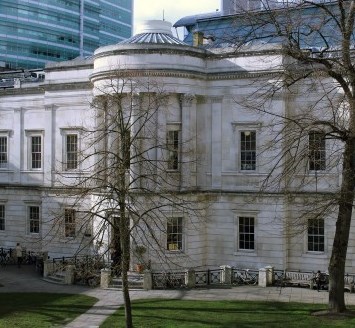 Despite Bomberg’s expulsion, the Slade School of Art (photo) was a central connecting point for the Whitechapel Boys’ artists, who studied there at overlapping periods (often struggling financially to be able to attend). They were open to ideas from European movements, and the modernity of their art can be seen in the varied pictures and sculpture on display in the Out of Chaos exhibition – including the pictures by Mark Gertler, Clare Winsten, and Jacob Kramer illustrated below. For more details about the Out of Chaos exhibition, see the Laing exhibition page.
Despite Bomberg’s expulsion, the Slade School of Art (photo) was a central connecting point for the Whitechapel Boys’ artists, who studied there at overlapping periods (often struggling financially to be able to attend). They were open to ideas from European movements, and the modernity of their art can be seen in the varied pictures and sculpture on display in the Out of Chaos exhibition – including the pictures by Mark Gertler, Clare Winsten, and Jacob Kramer illustrated below. For more details about the Out of Chaos exhibition, see the Laing exhibition page.
left: Mark Gertler), Rabbi and Rabbitzin, 1914; right: Clare Winsten, Portrait of Joseph Leftwich, about 1920; Below: Jacob Kramer, Day of Atonement, 1919 © Estate of John David Roberts; all, Ben Uri Collection
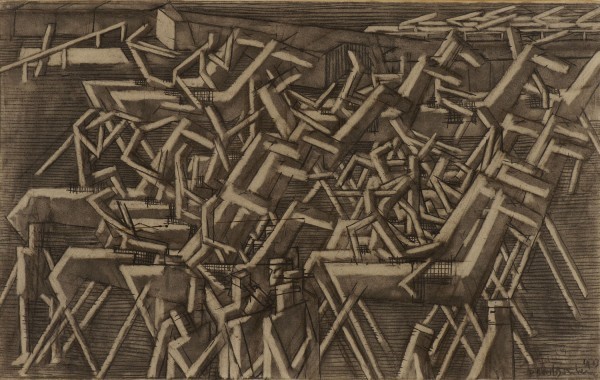
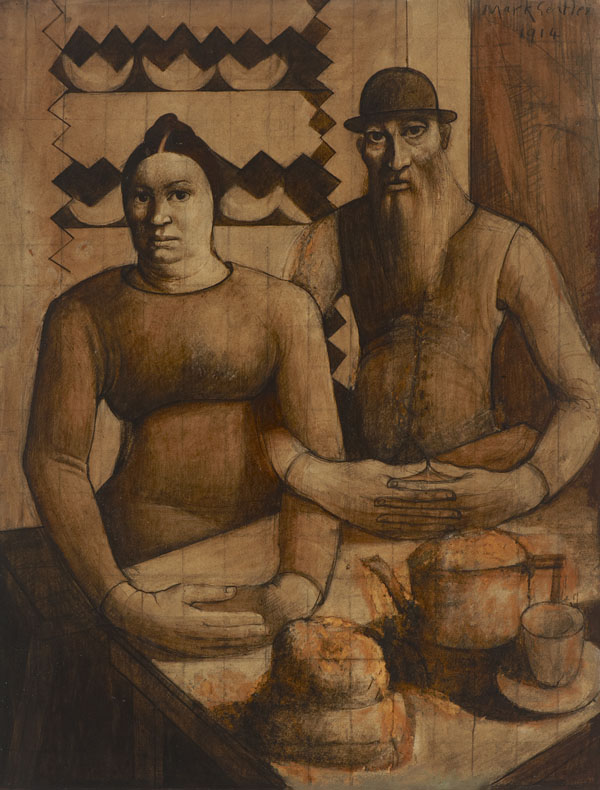
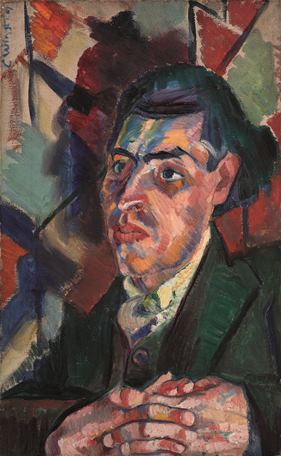
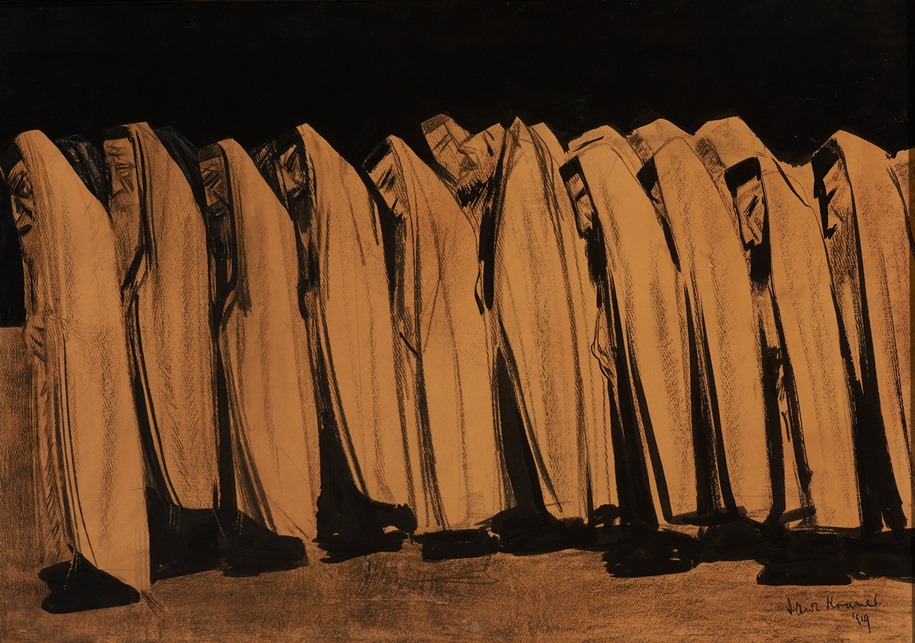
3 Responses to David Bomberg, Picasso, and the Whitechapel Boys